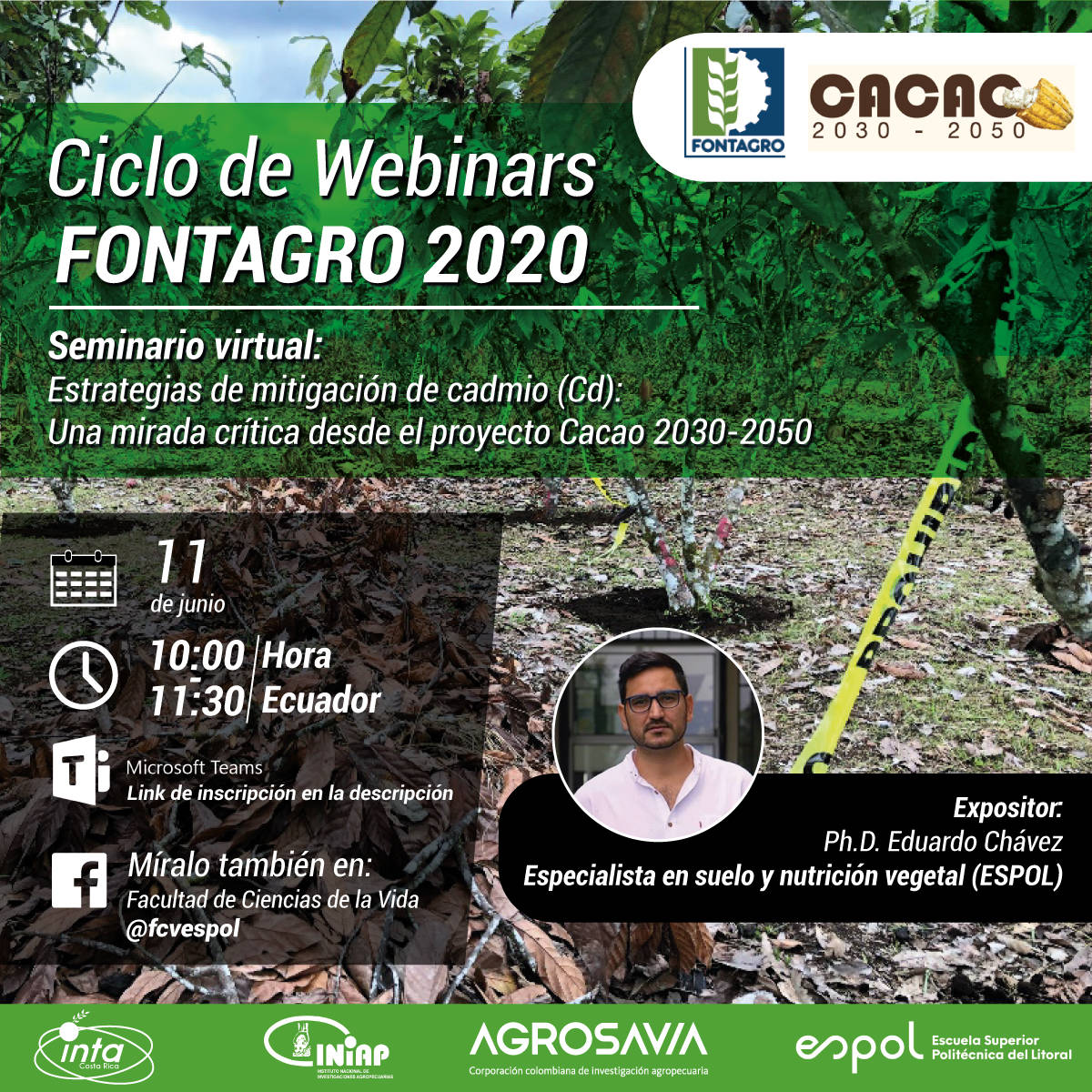In this conference, the technological practices of mitigation of cadmium in cocoa and the expectations that exist for the future were exposed.

In the framework of the webinar cycle of the Cocoa Platform 2030-2050 project, on June 11 the webinar was held: “Cadmium (Cd) mitigation strategies: A critical view from the project Multi-agency cocoa platform for LAC 2030-2050, which was in charge of the project director Eduardo Chávez PhD, who is also Professor of "Soil Management and Soil Management" and "Plant Nutrition and Fertilization" at ESPOL, Ecuador.
The event was not only of regional interest (LAC), but also international. It brought together 424 participants from public and private companies, from sectors such as academia, exporters and cocoa producers from more than 18 countries. Among the countries with the highest audience are Ecuador (315), Colombia (32), Costa Rica (23), Peru (21); Brazil, France, the United States, Israel, Spain, the United Kingdom, Panama, Venezuela and Honduras also participated.
The main interest of the audience was the discussion of potential soil amendments, such as liming agents, to immobilize cadmium in the soil and the efficiency in the different types of soils. The importance of soil pH for the availability of Cd to the plant was also discussed among other Cd mitigation alternatives.
Participants were interested in the importance of a reliable and quality cadmium test, the same that may be valid in other countries at the time of export, mainly in the European Union (EU). For this, the Multiagency Cocoa Platform 2030-2050 project works in interlaboratory tests at the level of Latin American and Caribbean countries to determine the dispersion of the results presented among the laboratories and establish a standardized methodology for the measurement of cadmium in the soil, leaves. and cocoa beans, in the member countries of the Platform: Ecuador, Costa Rica and Colombia.
97% of the attendees reflected through a satisfaction survey that the topic was relevant. Furthermore, they indicated that the mitigation strategies presented or studied to date are technically feasible (50%), economically viable (16%) and adoptable by farmers (28%). The participants expressed that there is still a way to go and to investigate, therefore, efforts must be united among the countries and mitigation alternatives must be validated in the different production ecosystems.
We invite you to see the entire conference:




